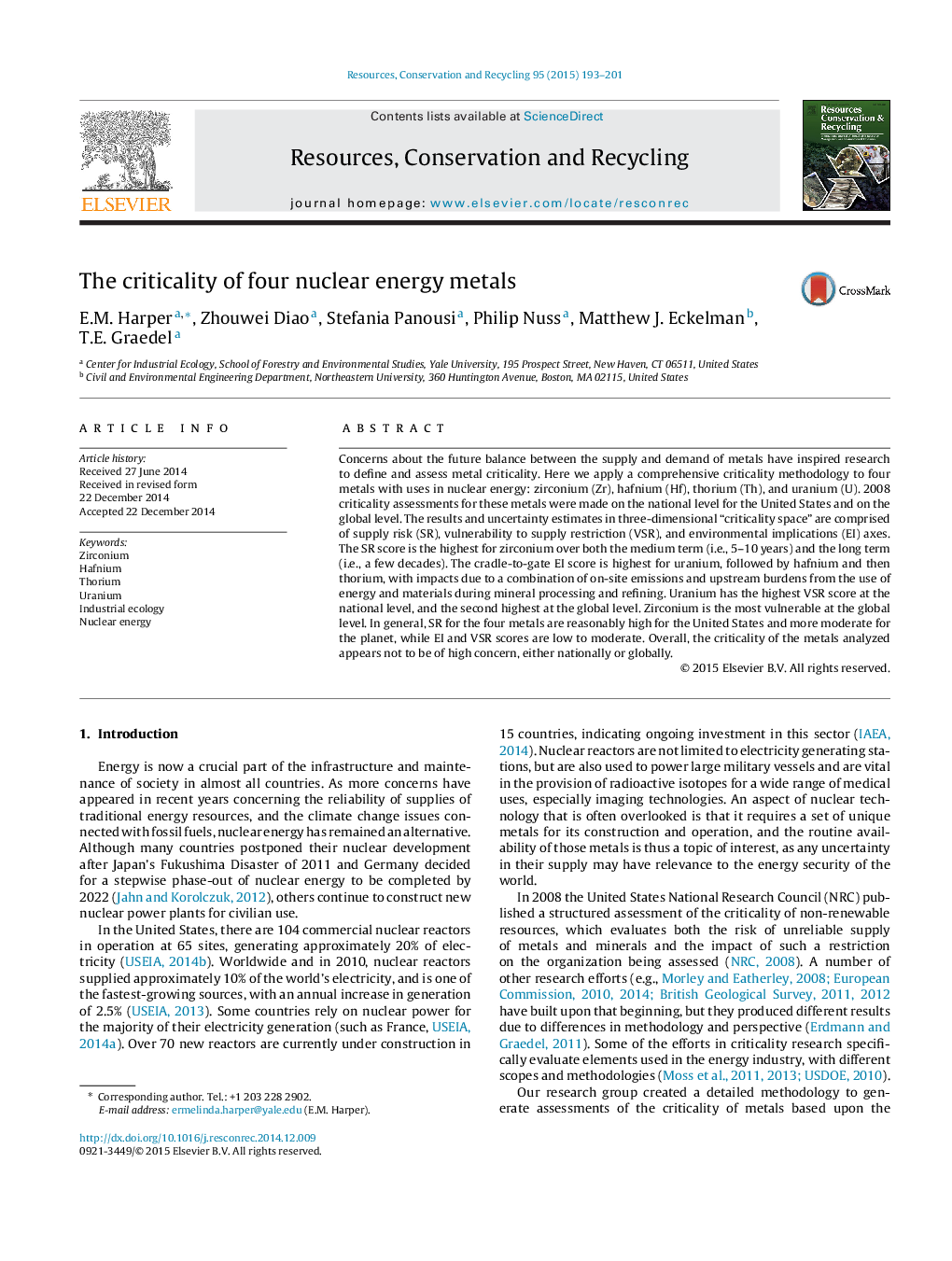| Article ID | Journal | Published Year | Pages | File Type |
|---|---|---|---|---|
| 7495277 | Resources, Conservation and Recycling | 2015 | 9 Pages |
Abstract
Concerns about the future balance between the supply and demand of metals have inspired research to define and assess metal criticality. Here we apply a comprehensive criticality methodology to four metals with uses in nuclear energy: zirconium (Zr), hafnium (Hf), thorium (Th), and uranium (U). 2008 criticality assessments for these metals were made on the national level for the United States and on the global level. The results and uncertainty estimates in three-dimensional “criticality space” are comprised of supply risk (SR), vulnerability to supply restriction (VSR), and environmental implications (EI) axes. The SR score is the highest for zirconium over both the medium term (i.e., 5-10 years) and the long term (i.e., a few decades). The cradle-to-gate EI score is highest for uranium, followed by hafnium and then thorium, with impacts due to a combination of on-site emissions and upstream burdens from the use of energy and materials during mineral processing and refining. Uranium has the highest VSR score at the national level, and the second highest at the global level. Zirconium is the most vulnerable at the global level. In general, SR for the four metals are reasonably high for the United States and more moderate for the planet, while EI and VSR scores are low to moderate. Overall, the criticality of the metals analyzed appears not to be of high concern, either nationally or globally.
Related Topics
Physical Sciences and Engineering
Energy
Renewable Energy, Sustainability and the Environment
Authors
E.M. Harper, Zhouwei Diao, Stefania Panousi, Philip Nuss, Matthew J. Eckelman, T.E. Graedel,
